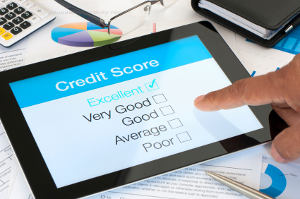What is a Conventional Loan?
By Steven Roberts Updated on 7/19/2017 The term conventional loan describes any mortgage loan that is not guaranteed or insured by the Federal Government. These loans follow the loan limits and guidelines set forth by the Government Sponsored Enterprises (GSEs) Fannie Mae and Freddie Mac.
The term conventional loan describes any mortgage loan that is not guaranteed or insured by the Federal Government. These loans follow the loan limits and guidelines set forth by the Government Sponsored Enterprises (GSEs) Fannie Mae and Freddie Mac.
Some conventional loans do not follow these guidelines and are known as non-conforming. Conventional loans typically have low closing costs and a variety of flexible payment options.
Conventional Loan Eligibility
When applying for a conventional mortgage loan, lenders will consider the following criteria:
- Income and Employment. To qualify, borrowers must demonstrate a steady flow of income with stable employment. Lenders will look at income employment history and the likelihood of both continuing in the future. Most lenders will accept income as stable if there is a reasonable assumption the income level will maintain or increase for at least the next three years.
- Debt-to-Income (DTI) Ratio. This ratio refers to the percentage of a borrower’s income that is applied toward paying debts. Generally, conforming conventional loans require a debt to income ratio of less than 43%. A maximum of 43% of a borrower’s gross monthly income can be applied to all debts, including the newly proposed mortgage payment (with property taxes, insurance and HOA fees), auto loans, credit card payments, student loans, child support, alimony and other recurring payments. Utilities are not included in DTI calculations (phone, electric, water, lawn care, etc.). Essentially, the ratio determines whether a borrower can afford the loan.
- Credit History. While credit score plays a major role in securing a conventional loan, credit history is also significant to lenders. Generally, FICO scores of 660 or above will safely qualify for a conventional loan, but scores as low as 620 may be acceptable to some lenders. However, lenders also consider overall patterns in credit history. For example, you may have an acceptable score of 680, but if you have only one credit line which has been open only eight months, you may not be approved because of a lack of credit history. Some lenders allow non-traditional trade lines to supplement those found on a credit report.
Down Payment Requirements
Conventional loans require slightly higher minimum down payments than loans guaranteed by some government programs. Generally, homebuyers must invest at least 5% of the home purchase price for the down payment.
Homeowners who put down at least 20% of the purchase price as a down payment do not have to pay upfront for mortgage insurance.
For more in-depth information, visit Lender411's Conventional Loan Requirements.
Advantages
Conventional mortgage loans offer advantages over government-insured loans:
- Borrowers can avoid paying the upfront mortgage insurance and possibly the monthly mortgage insurance of an FHA loan
- Appraisals will only need to meet lender guidelines, rather than the regulations set in place by the Federal Housing Administration (FHA) or the Department of Veteran Affairs (VA), which can be more strict in certain situations.
- For borrowers who cannot obtain Private Mortgage Insurance (PMI) for one reason or another, lenders may offer to self-insure the loan, although they will typically charge a higher interest rate as compensation for assuming a greater risk.
- Conventional loans with monthly private mortgage insurance premiums will have the premiums canceled once the home has 22% equity (78% loan-to-value). Many FHA loans will have monthly mortgage insurance premiums for the life of the loan, depending on the loan term and down payment.
- Lenders may be willing to credit a percentage of the closing costs in return for higher interest rates. This option may be available in certain government programs as well, but limitations may apply.
Disadvantages
- As previously indicated, conventional loans require slightly larger down payments than loans insured by the federal government.
- While interest rates vary from lender to lender and depend on circumstances of the borrower, some conventional interest rates may exceed those of loans insured by the FHA and VA, depending on a potential homebuyer's situation
- Loans with a loan-to-value ratio that exceeds 80% will require the purchase of Private Mortgage Insurance (PMI), which adds expense to the total loan cost.
- Conventional loans may have more strict guidelines for certain scenarios.
- Certain creative financing options for homebuyers may not be available from conventional loan lenders.
Who Should Get a Conventional Loan
If you are considering a conventional mortgage loan, consider the following questions to determine whether or not a conventional loan would be your best option:
Do I need flexible loan terms?
While some government-insured mortgage programs do not offer much flexibility, conventional loans offer a plethora of loan options, allowing borrowers to customize the loan length, repayment plan, and other details.
How much does my potential home cost?
Conventional loan limits differ depending on whether the loan is conforming or non-conforming. Conforming conventional loans have limits on loan amount. The current maximum amount available to borrow in most counties is $417,000 for a single family residence (this limit is higher in high cost areas).
Non-conforming conventional loans, on the other hand, do not have loan limits, and borrowers can secure much larger amounts of money through these loans. In fact, by definition, jumbo loans are classified as non-conforming loans. If you are considering a home purchase that costs more than regional FHA loan limits for your area or the FHA maximum loan limit, a conventional mortgage may be a viable option.
Can I afford to make a large down payment?
Conventional loans require a slightly larger down payment than government-insured loan programs, generally at least 5%. However, making a larger down payment can substantially reduce interest rates and monthly payments for borrowers who can afford it.
Additionally, borrowers who make a down payment of at least 20% will not be required to pay for mortgage insurance, further reducing conventional loan costs.
Do I qualify?
While government-insured loans tend to have more lenient qualifications in certain aspects, conventional loans can have more rigid borrower requirements. In addition to a stable income and employment history, conventional loans heavily consider credit history patterns when determining a borrower’s loan approval.
Therefore, borrowers with low or damaged credit should consider alternatives to conventional loans.
Conventional Loan Refinancing
Refinancing a Conventional Loan is a good idea when mortgage rates are low or if a homeowner needs to tap into the equity in their home for debt consolidation, home improvement or other reasons. Many homeowners also refinance to turn their adjustable rate mortgage (ARM) into a fixed-rate loan.
After homeowners identify the need to refinance, they should speak with their lender about which option will work best for them.
Be aware that borrowers don’t have to refinance with their previous lenders. Borrowers are encouraged to do research and work with the lender who provides them the best rates and is the most reputable, even if that means switching lenders.
Many times, homeowners can actually get a better deal with a new lender who will be more aggressive in trying to obtain the loan than their existing lender.
Conventional Home Loan Eligible Property
Conventional mortgage guidelines allow borrowers to apply loan funds to a variety of different property types, including primary residences, second homes, and investment properties. In addition, conventional loan funds may also be used to purchase condos, townhomes, 2-4 unit properties, modular homes, manufactured homes and single-family residences.
Conventional Home Loan Limits
Maximum Loan Amount: Conventional loan maximum limits vary between counties, depending on the home values in that county. The highest maximum conventional conforming loan limit is currently $729,750 in higher cost areas. The most common and lowest maximum county limit available is $417,000.
Maximum Financing: For most conventional conforming loans, the maximum financing available for a mortgage is 95% of the home’s appraised value or the selling price, whichever amount is lower. Some credit scores, property types, or combination of factors may limit this maximum loan-to-value even more.
Conventional Home Mortgage Programs
Fixed-Rate Loans: The majority of conventional mortgages include a fixed-rate interest payment program. With a fixed-rate mortgage, the interest rate remains static, and borrowers will pay the same monthly principal and interest payment for the life of the loan.
Adjustable-Rate: Conventional adjustable-rate mortgages (ARMs), while not as common as FRMs, can be tremendously beneficial for some borrowers. These mortgages begin with low initial interest rates and monthly payments. However, after a period, the interest rate fluctuates based upon a pre-determined index. This type of mortgage is considered more risky, since interest rates may increase, consequently increasing a borrower’s monthly mortgage payments.
Many conventional ARMs offer initial fixed-interest periods of 1, 3, 5, 7 or 10 years.
Conventional Home Loan Credit Score
To be considered for a Conventional Loan, a credit score of 660 or above is recommended. A credit score is one of the biggest factors in obtaining a Conventional Loan; considering the strict credit requirements for conventional loans, a poor credit score could very well harm your chances of qualifying.
Conventional Interest Rates Based on Score
Credit score will affect your mortgage interest rates on conventional loans. Scores about 740 or above will typically get you the best rates.
Conventional Loan and Short Sales
The typical waiting period for receiving a Conventional Loan after a short sale can be as much as 7 years. However, this number depends directly on how big the down payment is.
- If the down payment is at least 20%, the waiting period is two years.
- If the down payment is between 10% and 20%, the waiting period is four years.
- If the down payment is lower than 10%, the waiting period will be seven years.
Conventional Loan and Foreclosure
The standard waiting period on a conventional loan after a foreclosure is seven years. However, given extenuating circumstances, you may qualify for a new conventional loan as little as 36 months after a foreclosure.
Getting a Conventional Loan after Bankruptcy
Receiving a conventional loan after a credit-bruising event like bankruptcy tends to be difficult.
- Chapter 7 Bankruptcy: Borrowers discharged from a Chapter 7 bankruptcy must wait a minimum of four years to be eligible for a conventional mortgage. Given reasonable extenuating circumstances, the waiting period is 2 years.
- Chapter 13 Bankruptcy: Borrowers who have undergone a Chapter 13 bankruptcy must wait a minimum of two years for eligibility to be restored. Additionally, borrowers must present documentation proving they have re-established good credit since the bankruptcy.
Find a Conventional Mortgage Lender
When searching for a conventional mortgage, always remember to set aside the appropriate amount of time to compare lenders, loan terms, and mortgage rates.
Taking the time to secure the best interest rates could save you thousands of dollars over the lifetime of the loan.

Didn't find the answer you wanted? Ask one of your own.
-
 Refinancing a Conventional Loan
View More
Refinancing a Conventional Loan
View More
-
 Credit Score Requirements for Conventional Loans
View More
Credit Score Requirements for Conventional Loans
View More
-
 Conventional Versus FHA Loans
View More
Conventional Versus FHA Loans
View More
-
 Alternatives To a Standard Mortgage
View More
Alternatives To a Standard Mortgage
View More
-
 Making a Mortgage Decision: Conventional, FHA and VA Home Loans
View More
Making a Mortgage Decision: Conventional, FHA and VA Home Loans
View More
-
 Five Year Fixed Rate Mortgages Explained
View More
Five Year Fixed Rate Mortgages Explained
View More

Contributing Authors
Get a Free Quote! Get a Conventional Loan!
Related Articles
Ask our community a question.
Searching Today's Rates...

Featured Lenders
Terry Triplett
LSI Mortgage Plus
Saint Louis, MO
Reggie Crouse
Top Flite Financial
Little Rock, AR
Daniel Walsh
Peoples Bank
Cincinnati, OH
Lisa Stepp
RBS Citizens
Clifton Park, NY



